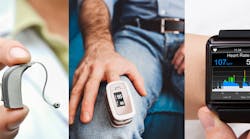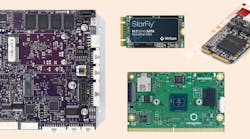Available On Demand
Originally Broadcast: Tuesday, December 14, 2021
Sponsor: Analog Devices
Duration: 30 Minutes
Already registered? Please click here to log in!
Summary
Human vital monitoring has moved from the doctor’s clinic to people's wardrobes. With the changing perspective of consumers toward a more self-aware and informed personal health the healthcare industry has evolved into a predictive, precision, personal healthcare model. With more vital monitoring wearable devices entering the market with each day, it is incumbent of the sensor system designers to come up with the right combination of the power management and sensor solution which can guarantee low power consumption and form factor without compromising on the fidelity of the sensor measurements. Specifically, when it comes to pulse oximetry, understanding the correlation between the typical power requirements of the LED transmitters and the SNR characteristics of the optical sensor module is essential to get the system design accurate.
This webinar examines how the Single-Inductor, Multiple-Output (SIMO) architecture delivers high system efficiency in the smallest form factor for space-constrained designs like wearables, hearables and low-power consumer designs. With scalable, low-power SIMO PMICs in your design, you can regain board space for value-added modules enabling functions such as voice commands, biometrics, gesture control, GPS, and more.
Attend the webinar to learn how you can:
- Extend your product’s battery life by 20%
- Benefit from output voltage ripple performance of less than 20mVp-p for noise sensitive sensor rails
- Reduce your total power solution size by 50%
- Charge your wearable 4x faster
An audience Q&A session will follow the technical presentation. Some attendees may be offered a free evaluation kit at Analog Devices’ discretion.
Speaker
Gaurav Mital, Senior Principal Power Architect, Battery Power Solutions Business Unit, Analog Devices
Gaurav Mital is a senior principal power architect for Analog Devices' PMIC product line focused on AI application processors for edge IoT platforms, as well as advanced wearables for healthcare/fitness/lifestyle applications. For over 15 years he has worked on a variety of medtech sensor applications and semiconductor technologies. During this time, he has held multiple roles ranging from design and applications to product management. Gaurav holds a Master of Science Degree in EEE from California State University.
Sponsored by:
Register







